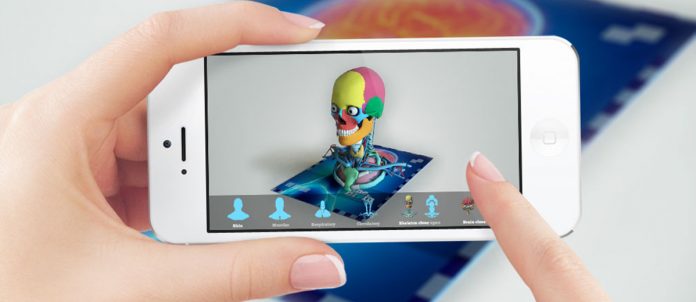Compiled by Dosti Zahra
To state the definition, augmented reality is the term used for a camera-enhanced view of a physical real-world environment, where virtual elements are merged with a real-life scene creating a ‘mixed reality’ of virtual elements and the real world. These virtual elements could basically be anything, such as 3D models, video, web information and so on. If AR begins to be implemented in Pakistan, you could view a street in Saddar, Karachi through your phone camera and could actually see the buildings that existed there, what they looked like in their glory and could learn their history immediately. Similarly, if you visited Lahore, for example, you could point your smart phone’s camera down the road and in return, be presented with information or data relative to nearby interest points such as shops, eateries and prime tourist spots. All this and a lot more is possible with AR technology such as bringing home a brochure and trying on all the luxury watches available in it.
As a marketing and sales tool, the scope for augmented reality is endless. Any sales person will tell you that the ability to put a self-demonstrating version of your product in your prospective customer’s hand is crucial, but not always possible, or is it? AR makes it possible for customers to visualize any product regardless of size or location. There is scientific evidence that shows by simply touching a product for a few seconds, people get attached to it that often leads to buying or even paying more for the item. Marketing and sales teams assisted by augmented reality are able to achieve this type of connection. This is especially powerful as research into the psychology of sales indicated that people become personally attached to a product within the first 30 seconds of contact when presented with a physical or virtual item.
To use augmented reality all you need is a standard computer with a webcam or a smart device such as a phone or tablet with a camera. If using a more advanced commercial brand of augmented reality, there may be a small download required when viewing the augmentation through a web browser. The download is typically less than 1MB and obtained and installed no differently than any other simple browser plug-in. If viewing an augmented reality experience on a smart phone or tablet device, you will be required to download the application just as you would with any other application you might install on the device. There are no special configuration requirements and installation should be transparent to the user.
Augmented reality is a fast growing technology and the ‘must have’ marketing tool which is helping transform the way we engage information. AR is already being used as part of marketing communication to help bring brand experiences to life; it has also been used to drive traffic to digital campaigns or as a part of coupon or redemption-led sales promotion strategies. Marketers are driving growth in AR and data from ABI Research has proven that the market for augmented reality will reach $350m (£218m) during 2014 – and that is just in the US alone. Augmented reality has undergone a period of fast growth and the adoption of the first wave of market-based technology is now being used productively. Recent research by Hidden Creative demonstrates just how marketers are embracing the technology. Research has shown that events, conferences, brochures, online campaigns and pitches are the most popular uses of AR. The technology has the ability to bring to life intricate architecture and engineering designs. In these markets, putting the product in the audience’s hand is typically costly, difficult, dangerous or impossible but not when done through augmented reality. Marketers are also using the technology to add a visual representation of the product or service to their collateral through AR, and consumers can access richer and more immersive information via their smart devices, laptops, PCs and webcams.
Some of the biggest companies in the world are using AR e.g. Lego has implemented in-store kiosks that allow customers to hold a Lego product box up to a camera and see the item inside build itself into a virtual model of the product; BMW uses augmented reality for training purposes as engineers are equipped with eyewear that overlays virtual information specific to procedure used in the construction or repair of their automobiles and so on.
Hence, AR is being hailed as the next big step in technology, especially for marketers and clients and is expected to become more commonly used. Whether our market will utilize this technology and its many benefits remains to be seen.
Content provided by 7WIN














